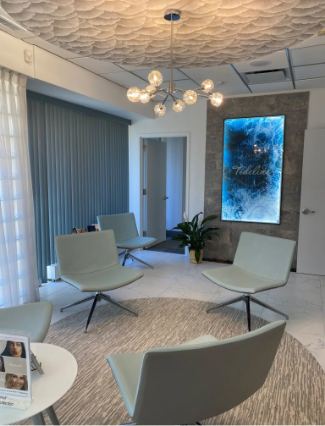
It’s normal to experience changes in your pelvic health as you get older. For women, symptoms like vaginal dryness and laxity are a natural result of events like menopause or childbirth. Fortunately, you don’t need to live with these symptoms, nor do you need to pursue surgery. There are a variety of non-surgical treatment technologies available for feminine health, two of which are ThermiVa® and MonaLisa Touch®. Here’s what to know about these options and which one is right for your needs.
What’s the difference between MonaLisa Touch and ThermiVa?
Both treatments can relieve symptoms like vaginal dryness, atrophic vaginitis, and pain during intercourse. However, they both use different forms of energy to achieve their goals. ThermiVa is a radiofrequency device that generates gentle heat to stimulate collagen and rebuild tissues. MonaLisa Touch, on the other hand, uses fractional CO2 energy to ablate tiny areas of the vaginal walls, stimulating tissue regeneration. It also generates gentle heat to stimulate regrowth, similar to ThermiVa. However, ThermiVa only generates heat while MonaLisa Touch has the additional benefit of fractional ablation.
Do MonaLisa Touch and ThermiVa hurt?
Both treatments can be performed right in our office. Because ThermiVa does not ablate tissue, it comes with virtually no downtime. It’s also painless, meaning you can get right back to your normal schedule. MonaLisa Touch also requires no anesthesia and is associated with only mild discomfort if any. You can return to your normal schedule immediately, the same as ThermiVa. In both cases, you should avoid intercourse for at least 24 hours.
How long do results last?
Each option works best as a package of three treatments spaced about three weeks apart in the case of ThermiVa, and six weeks in the case of MonaLisa Touch. MonaLisa Touch’s more intensive treatment means that results will last longer than ThermiVa. Additionally, it’s common to require a package of treatments every 8-12 months with ThermiVa while MonaLisa Touch can require maintenance treatments every 12 months or longer. Although neither option is permanent, MonaLisa Touch can be a much longer-lasting investment than ThermiVa.
Can MonaLisa Touch and ThermiVa be used for cosmetic treatment?
Procedures like labiaplasty are no longer the only option for cosmetic feminine rejuvenation. ThermiVa can provide cosmetic treatment for the vulva by stimulating tissue contraction while MonaLisa Touch is not indicated for external cosmetic treatment.
Can MonaLisa Touch and ThermiVa treat incontinence?
Incontinence is another symptom commonly experienced by postpartum and aging women. Both MonaLisa Touch and ThermiVa are indicated for relieving stress urinary incontinence by stimulating the supportive tissue in the pelvic region.
Schedule an Appointment
It can be difficult to determine which option is best for your needs, but our team can help. To learn more about non-surgical feminine rejuvenation, contact Tideline Center for Health & Aesthetics by calling or filling out our online contact form.
Our blog
Back to all blogs
Contact us today
Please fill out the form below, and someone will respond shortly. You can also call 516-833-1301 with any questions you may have.








